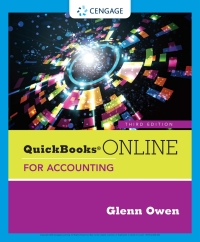
This is all one question based on the information given above. Please answer all parts. 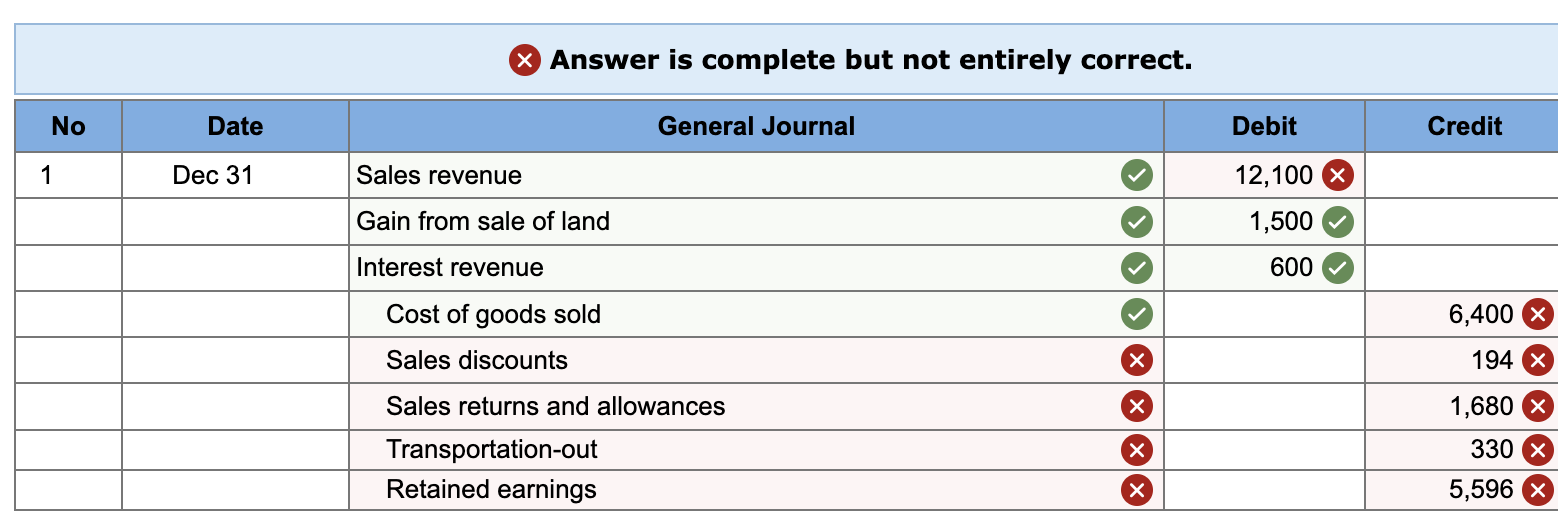
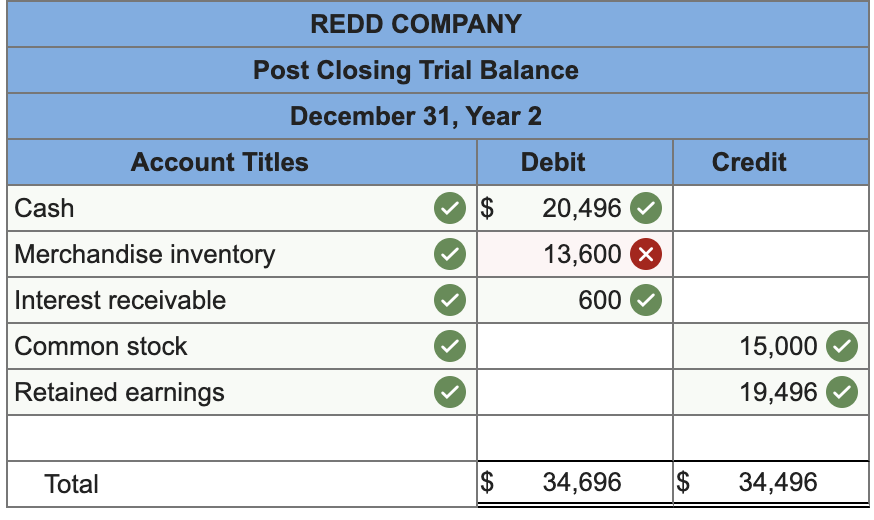
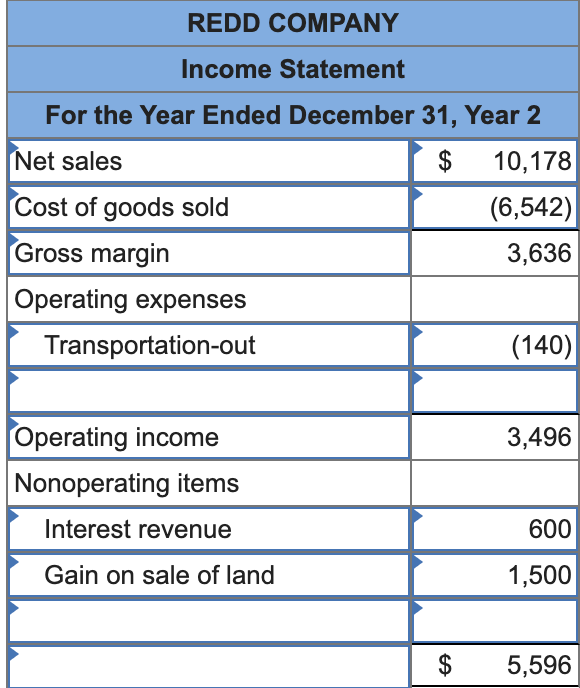
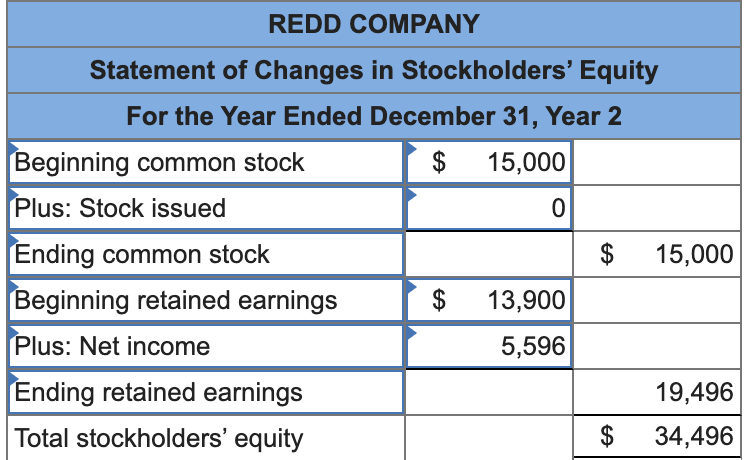
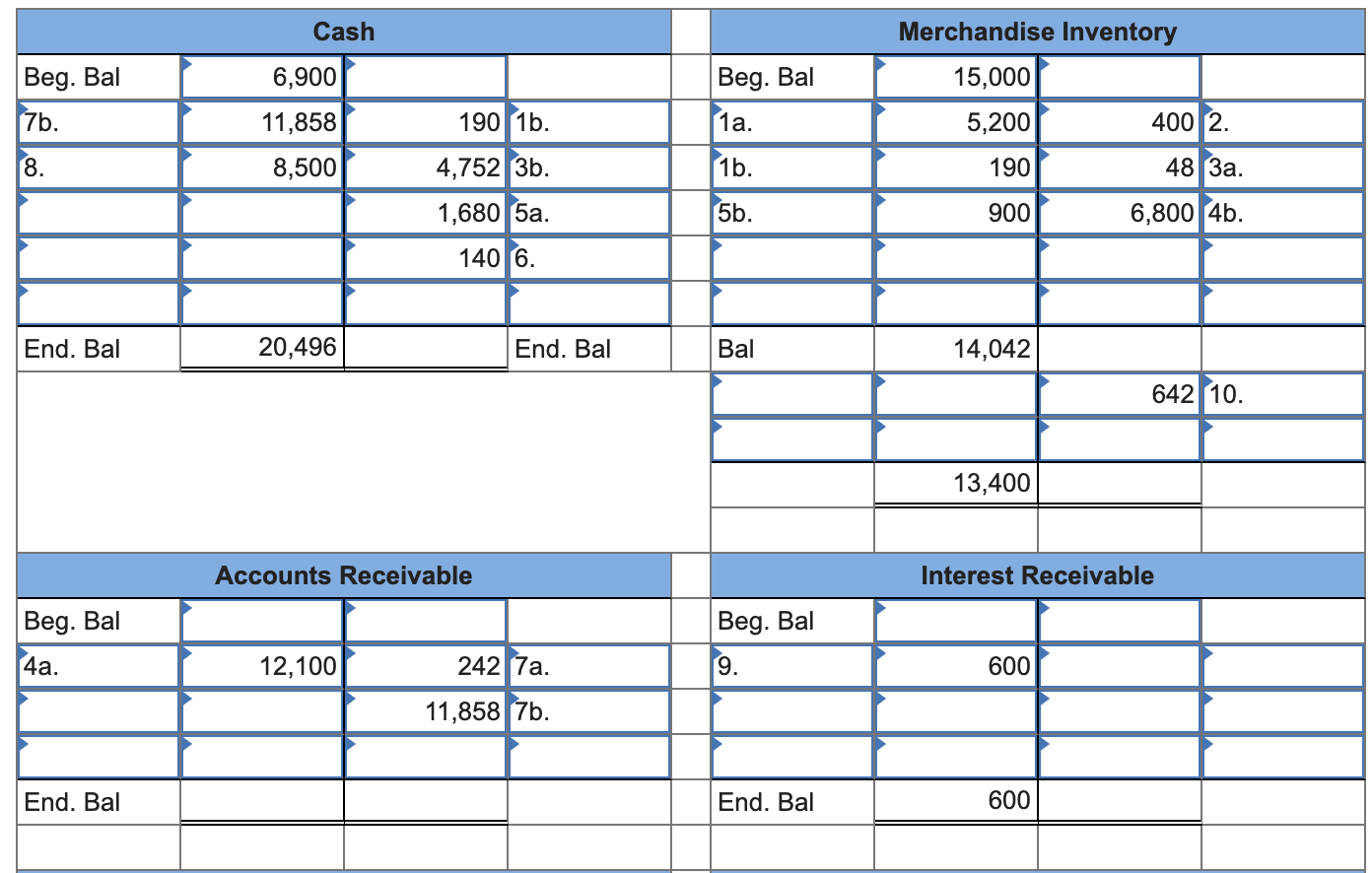

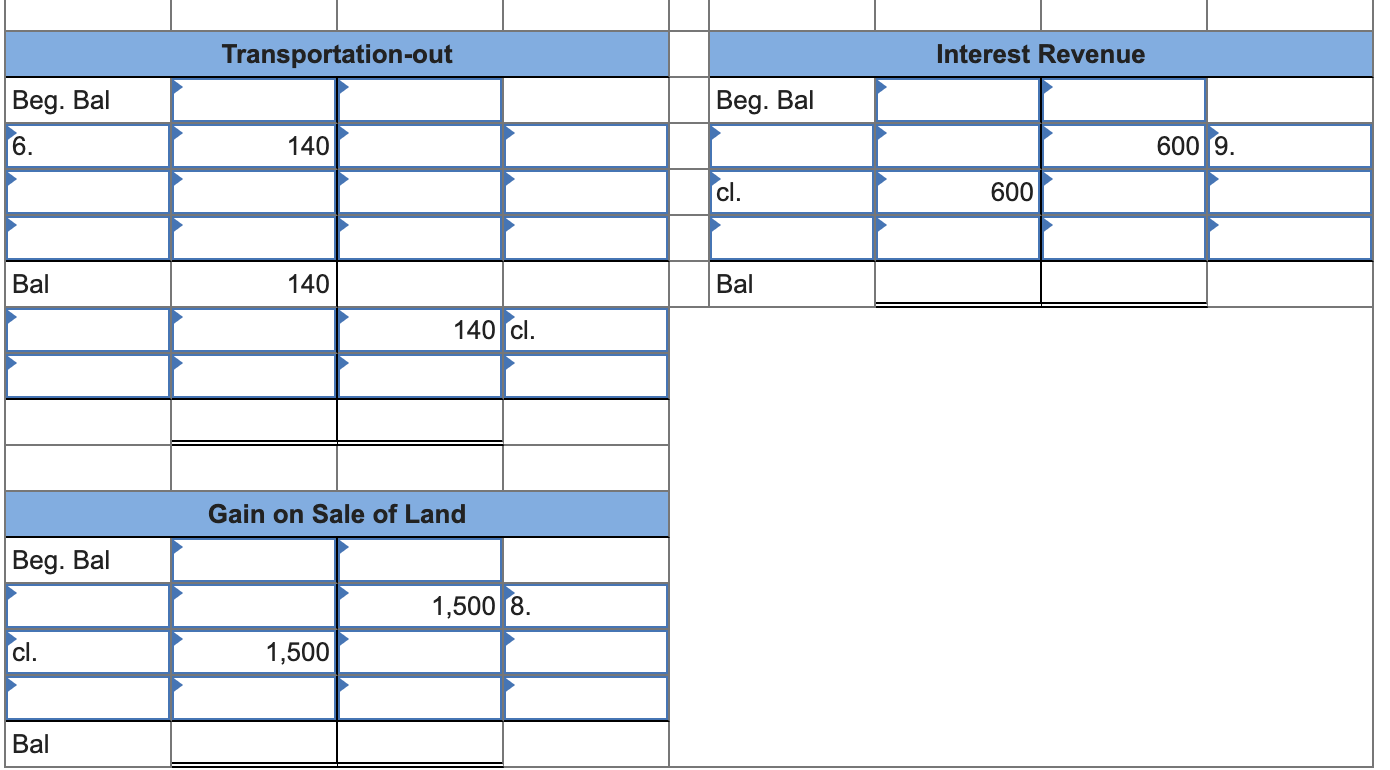
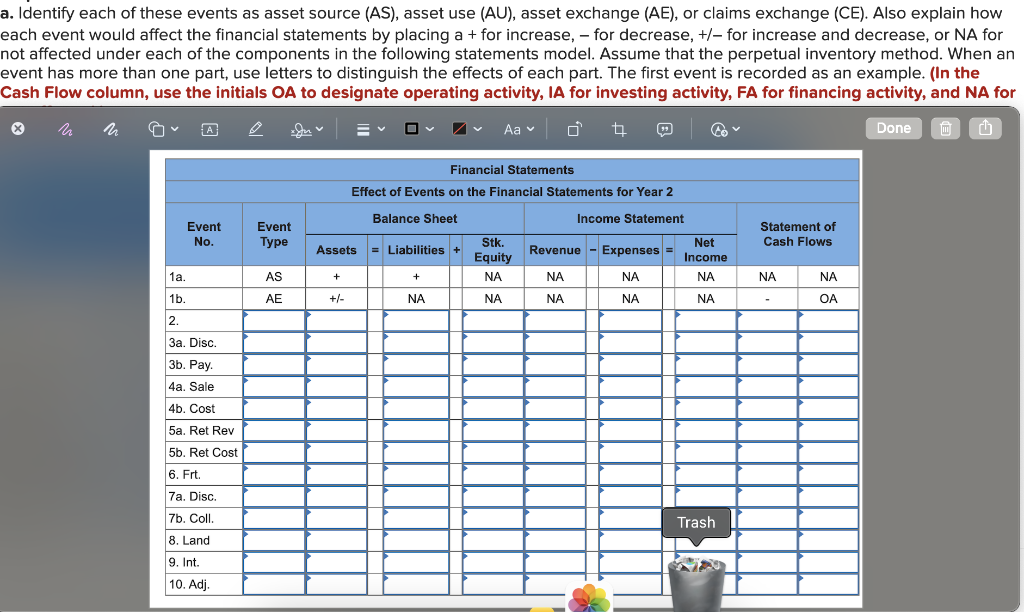
At the beginning of Year 2, the Redd Company had the following balances in its accounts: Cash Inventory Land Common stock Retained earnings $ 6,900 15,000 7,000 15,000 13,900 During Year 2, the company experienced the following events: 1. Purchased inventory that cost $5,200 on account from Ross Company under terms 1/10, n/30. The merchandise was delivered FOB shipping point. Freight costs of $190 were paid in cash. 2. Returned $400 of the inventory it had purchased from Ross Company because the inventory was damaged in transit. The seller agreed to pay the return freight cost. 3. Paid the amount due on its account payable to Ross Company within the cash discount period. 4. Sold inventory that had cost $6,800 for $12,100 on account, under terms 2/10, n/45. 5. Received merchandise returned from a customer. The merchandise originally cost $900 and was sold to the customer for $1,680 cash. The customer was paid $1,680 cash for the returned merchandise. 6. Delivered goods FOB destination in Event 4. Freight costs of $140 were paid in cash. 7. Collected the amount due on the account receivable within the discount period. 8. Sold the land for $8,500. 9. Recognized accrued interest income of $600. 10. Took a physical count indicating that $13,400 of inventory was on hand at the end of the accounting period. (Hint: Determine the current balance in the inventory account before calculating the amount of the inventory write down.) X Answer is complete but not entirely correct. No Date General Journal Debit Credit 1 Dec 31 Sales revenue 12,100 X 1,500 Gain from sale of land Interest revenue 600 Cost of goods sold 6,400 X Sales discounts 194 x Sales returns and allowances Transportation-out Retained earnings 1,680 330 x 5,596 REDD COMPANY Post Closing Trial Balance December 31, Year 2 Account Titles Debit Credit Cash $ 20,496 Merchandise inventory 13,600 X Interest receivable 600 Common stock 15,000 Retained earnings 19,496 Total $ 34,696 $ 34,496 REDD COMPANY Income Statement For the Year Ended December 31, Year 2 Net sales $ 10,178 Cost of goods sold (6,542) Gross margin 3,636 Operating expenses Transportation-out (140) 3,496 Operating income Nonoperating items Interest revenue 600 Gain on sale of land 1,500 $ 5,596 REDD COMPANY Statement of Changes in Stockholders' Equity For the Year Ended December 31, Year 2 Beginning common stock $ 15,000 Plus: Stock issued 0 $ 15,000 Ending common stock Beginning retained earnings $ 13,900 Plus: Net income 5,596 19,496 Ending retained earnings Total stockholders' equity $ 34,496 Cash Merchandise Inventory Beg. Bal 6,900 Beg. Bal 15,000 7b. 1901b. 1a. 5,200 400 2. 11,858 8,500 8. 1b. 190 48 3a. 4,752 3b. 1,680 5a. 5b. 900 6,800 46. 140 6. End. Bal 20,496 End. Bal Bal 14,042 642 10. 13,400 Accounts Receivable Interest Receivable Beg. Bal Beg. Bal 4a. 12,100 242 7a. 9. 600 11,858 7b. End. Bal End. Bal 600 Land Accounts Payable Beg. Bal 7,000 Beg. Bal 7,000 8. 2. 400 5,200 1a. 3a. 48 3b. 4,752 End. Bal End. Bal Common Stock Beg. Bal 15,000 Beg. Bal Retained Earnings 13,900 2,100 cl. 6,040 9,760 cl. cl. End. Bal 15,000 End. Bal 19,720 Sales Revenue Cost of Goods Sold Beg. Bal Beg. Bal 5a. 1,680 12,100 4a. 4b. 6,800 900 5b. 7a. 242 10. 642 Dal An Azo nel CAO Transportation-out Interest Revenue Beg. Bal Beg. Bal 6. 140 600 9. cl. 600 Bal 140 Bal 140 cl. Gain on Sale of Land Beg. Bal 1,500 8. cl. 1,500 Bal a. Identify each of these events as asset source (AS), asset use (AU), asset exchange (AE), or claims exchange (CE). Also explain how each event would affect the financial statements by placing a + for increase, - for decrease, +/- for increase and decrease, or NA for not affected under each of the components in the following statements model. Assume that the perpetual inventory method. When an event has more than one part, use letters to distinguish the effects of each part. The first event is recorded as an example. (In the Cash Flow column, use the initials OA to designate operating activity, IA for investing activity, FA for financing activity, and NA for n n Aa v o 93 Done Financial Statements Effect of Events on the Financial Statements for Year 2 Balance Sheet Income Statement Event No. Event Type Statement of Cash Flows Assets = Liabilities + Revenue Expenses Net Income Stk. Equity NA NA 1a. AS + + + + NA NA NA NA NA 1b. AE +- NA NA NA NA 2. . 3a. Disc. 3b. Pay. 4a. Sale 4b. Cost 5a. Ret Rev 5b. Ret Cost 6. Frt. 7a. Disc. 7b. Coll. 8. Land 9. Int. Trash 10. Adj. At the beginning of Year 2, the Redd Company had the following balances in its accounts: Cash Inventory Land Common stock Retained earnings $ 6,900 15,000 7,000 15,000 13,900 During Year 2, the company experienced the following events: 1. Purchased inventory that cost $5,200 on account from Ross Company under terms 1/10, n/30. The merchandise was delivered FOB shipping point. Freight costs of $190 were paid in cash. 2. Returned $400 of the inventory it had purchased from Ross Company because the inventory was damaged in transit. The seller agreed to pay the return freight cost. 3. Paid the amount due on its account payable to Ross Company within the cash discount period. 4. Sold inventory that had cost $6,800 for $12,100 on account, under terms 2/10, n/45. 5. Received merchandise returned from a customer. The merchandise originally cost $900 and was sold to the customer for $1,680 cash. The customer was paid $1,680 cash for the returned merchandise. 6. Delivered goods FOB destination in Event 4. Freight costs of $140 were paid in cash. 7. Collected the amount due on the account receivable within the discount period. 8. Sold the land for $8,500. 9. Recognized accrued interest income of $600. 10. Took a physical count indicating that $13,400 of inventory was on hand at the end of the accounting period. (Hint: Determine the current balance in the inventory account before calculating the amount of the inventory write down.) X Answer is complete but not entirely correct. No Date General Journal Debit Credit 1 Dec 31 Sales revenue 12,100 X 1,500 Gain from sale of land Interest revenue 600 Cost of goods sold 6,400 X Sales discounts 194 x Sales returns and allowances Transportation-out Retained earnings 1,680 330 x 5,596 REDD COMPANY Post Closing Trial Balance December 31, Year 2 Account Titles Debit Credit Cash $ 20,496 Merchandise inventory 13,600 X Interest receivable 600 Common stock 15,000 Retained earnings 19,496 Total $ 34,696 $ 34,496 REDD COMPANY Income Statement For the Year Ended December 31, Year 2 Net sales $ 10,178 Cost of goods sold (6,542) Gross margin 3,636 Operating expenses Transportation-out (140) 3,496 Operating income Nonoperating items Interest revenue 600 Gain on sale of land 1,500 $ 5,596 REDD COMPANY Statement of Changes in Stockholders' Equity For the Year Ended December 31, Year 2 Beginning common stock $ 15,000 Plus: Stock issued 0 $ 15,000 Ending common stock Beginning retained earnings $ 13,900 Plus: Net income 5,596 19,496 Ending retained earnings Total stockholders' equity $ 34,496 Cash Merchandise Inventory Beg. Bal 6,900 Beg. Bal 15,000 7b. 1901b. 1a. 5,200 400 2. 11,858 8,500 8. 1b. 190 48 3a. 4,752 3b. 1,680 5a. 5b. 900 6,800 46. 140 6. End. Bal 20,496 End. Bal Bal 14,042 642 10. 13,400 Accounts Receivable Interest Receivable Beg. Bal Beg. Bal 4a. 12,100 242 7a. 9. 600 11,858 7b. End. Bal End. Bal 600 Land Accounts Payable Beg. Bal 7,000 Beg. Bal 7,000 8. 2. 400 5,200 1a. 3a. 48 3b. 4,752 End. Bal End. Bal Common Stock Beg. Bal 15,000 Beg. Bal Retained Earnings 13,900 2,100 cl. 6,040 9,760 cl. cl. End. Bal 15,000 End. Bal 19,720 Sales Revenue Cost of Goods Sold Beg. Bal Beg. Bal 5a. 1,680 12,100 4a. 4b. 6,800 900 5b. 7a. 242 10. 642 Dal An Azo nel CAO Transportation-out Interest Revenue Beg. Bal Beg. Bal 6. 140 600 9. cl. 600 Bal 140 Bal 140 cl. Gain on Sale of Land Beg. Bal 1,500 8. cl. 1,500 Bal a. Identify each of these events as asset source (AS), asset use (AU), asset exchange (AE), or claims exchange (CE). Also explain how each event would affect the financial statements by placing a + for increase, - for decrease, +/- for increase and decrease, or NA for not affected under each of the components in the following statements model. Assume that the perpetual inventory method. When an event has more than one part, use letters to distinguish the effects of each part. The first event is recorded as an example. (In the Cash Flow column, use the initials OA to designate operating activity, IA for investing activity, FA for financing activity, and NA for n n Aa v o 93 Done Financial Statements Effect of Events on the Financial Statements for Year 2 Balance Sheet Income Statement Event No. Event Type Statement of Cash Flows Assets = Liabilities + Revenue Expenses Net Income Stk. Equity NA NA 1a. AS + + + + NA NA NA NA NA 1b. AE +- NA NA NA NA 2. . 3a. Disc. 3b. Pay. 4a. Sale 4b. Cost 5a. Ret Rev 5b. Ret Cost 6. Frt. 7a. Disc. 7b. Coll. 8. Land 9. Int. Trash 10. Adj















